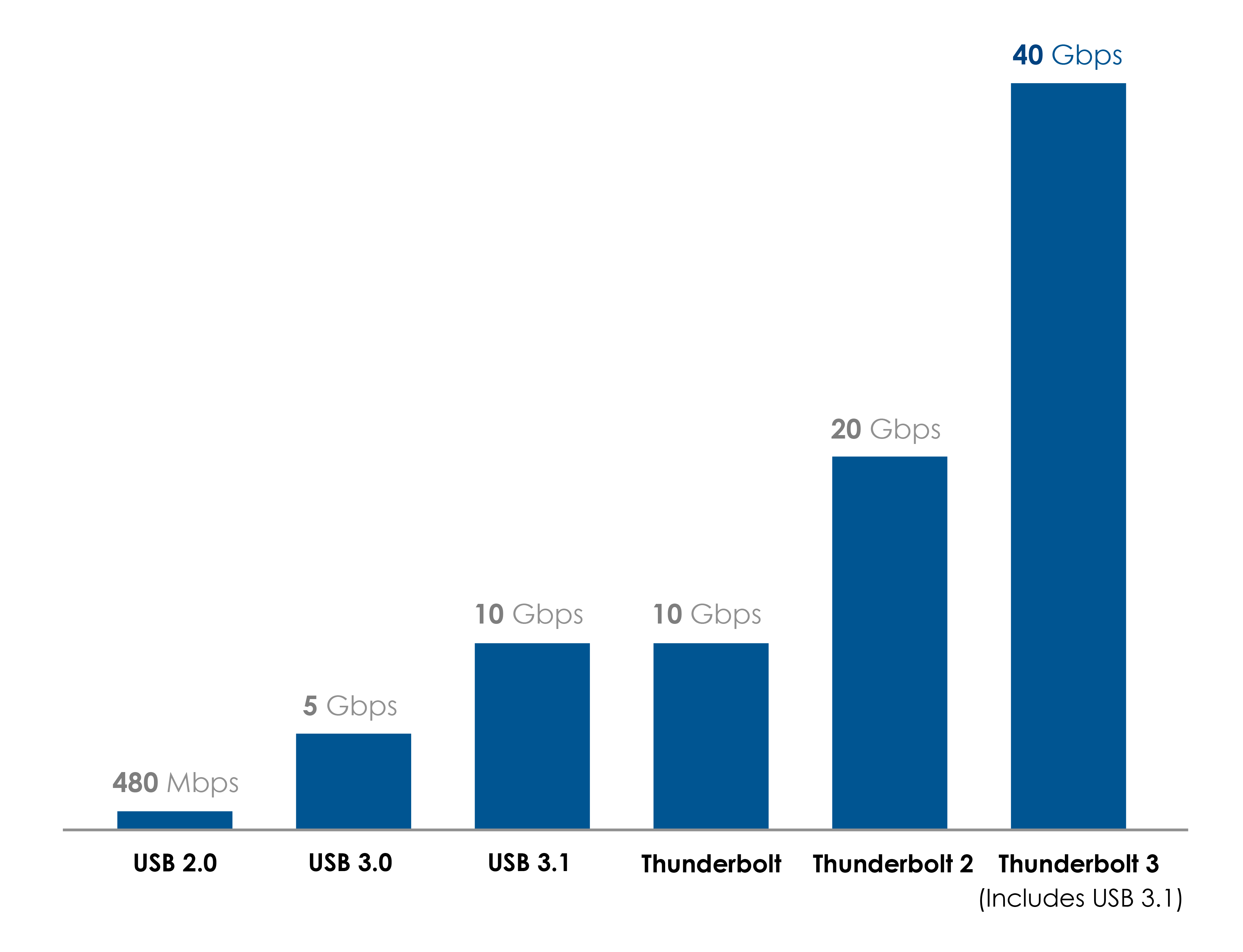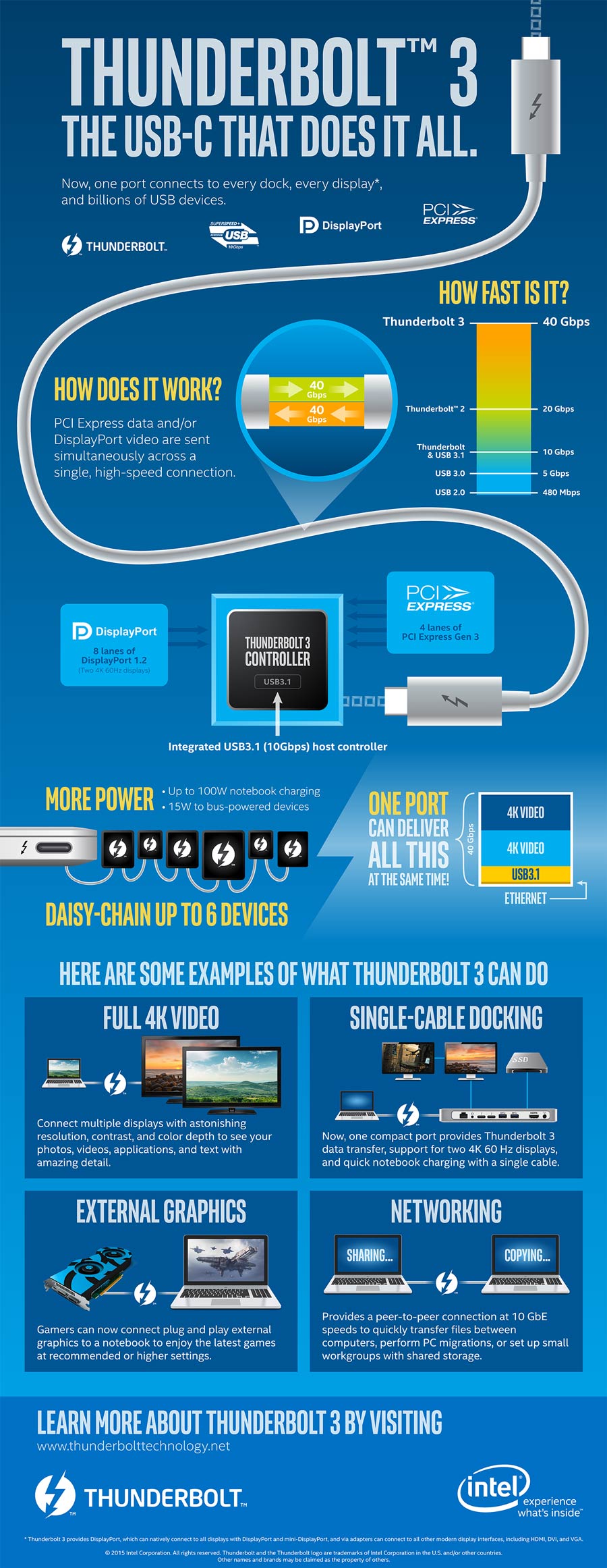While looking through various common computer connectors for a new project, a discussion on the use of USB versus Thunderbolt came forward. I needed (1) high speed transfer rates (10 Gb/s), (3) a connector that carries power, and (3) a connector used by a wide audience. Optionally, I would prefer the solution natively supports ethernet – otherwise I will need to introduce another microcontroller in the design.
After a pile of reading, I came to my own conclusion that Thunderbolt 3 is the better option.
1. Thunderbolt 3 has the same connector and is backward compatible with USB-C.
2. Thunderbolt 3 allows for up to 40 Gb/s transfer speeds while USB 3.1 generation 2 (USB 3.1 Gen 2) allows for 10 Gb/s transfer speeds.
So what’s the difference between USB 3.1 and USB-C?
USB A, B, and C are simply connector types. Furthermore, the USB type A (rectangle) and B (square) connectors are also available in micro and mini styles. The newer type C connector is an oval shaped connector.
Just because a product is using the USB type C connector, doesn’t mean it is operating the USB 3.1 Gen 2 protocol or the Thunderbolt 3 protocol.
Intel has made a very easy to digest chart describing the transfer rates of the USB 2.0, 3.0 (now known as 3.1 Gen 1), 3.1 Gen 2, Thunderbolt, Thunderbolt 2, and Thunderbolt 3.

USB 3.1 Gen 2 does support 10 Gb/s but it operates closer to 6 Gb/s. My project requires a full 10 Gb/s transfer speed. Maybe if USB 3.2 becomes readily available soon enough, I may be able to use it.
Notably, I also prefer to have an Ethernet controller as part of the protocol: Something that the USB protocol doesn’t have, but the Thunderbolt protocol does.
Furthermore, Thunderbolt 3 guarantees the availability of 15W to bus powered devices. USB doesn’t provide any such guarantee. My design requires a certain amount of power. If a host USB controller is split across 3 or 4 active USB ports, there may not be adequate power to operate my solution.
In addition to my needs, Thunderbolt 3 allows for more features such as the ability to supply up to 100W of power, carry two 4K 60Hz video signals (or one 4K 120Hz signal, or one 5K 60 Hz signal), operate external graphics cards (and other cards over PCI Express 3.0), the ability to chain up to 6 devices, and more! Here’s an infographic from Intel.
